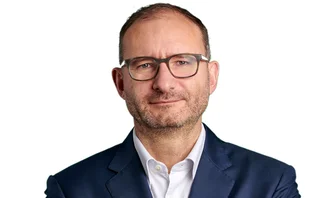
Rise in microfinance poses new regulatory problems
As new business models emerge in the microfinance space – leading to greater capabilities for servicing the unbanked – the cracks of regulatory pressure and operational risks are widening in both the developed and developing world

The provision of small loans to the impoverished has long been the remit of microfinance institutions (MFIs). Most organisations have emulated Grameen Bank, pioneered in 1976 in Bangladesh by the Nobel peace prize-winner Muhammad Yunus, aiming to use extensive local knowledge to help social development rather than operating on strictly commercial grounds.
Yet, while the traditional microfinance industry has largely been subsidy reliant, the past decade has seen a rising level of investor interest, allowing for the commercialisation of many institutions. As standardised metrics and benchmarks enable industry growth, the need for more effective regulation has also been reinforced – a shift that presents both opportunities and challenges for market players.
"Most people associate microfinance with micro credit, but credit is only one product and poor families in the informal economy have broader financial needs," says Tilman Ehrbeck, chief executive of the Consultative Group to Assist the Poor (CGAP), a subsidiary of the World Bank. "A lot of energy has gone towards figuring out how we can provide other services, such as savings, payments and insurance, which all have very different business model economics. It's the realisation that we need other outlets of access to finance, rather than the bricks-and-mortar bank branch in the district capital that takes a day to walk to."
In some countries the under-banked can look to various fast-growing sources of financial aid, ranging from institutions such as credit unions and community banks to short-term consumer credit providers and peer-to-peer lending schemes. Meanwhile, MFIs continue to scale up their financial product offering for small and medium-sized enterprises struggling to operate in rural parts of the world.
A developing and developed world issue
Regulation is a very important component and influencer, in terms of allowing these institutions to thrive and reach their intended market
Policy-makers know that unregulated, informal financial services for the desperately poor, such as 'loan sharking', involve excessive borrower costs. Most loans in this area are short-term in nature, resulting in unproductive investment activity for the broader economy. Due to the high percentage of unbanked in emerging countries, financial inclusion via ethical and well-structured avenues remains an important consideration for economic growth. But access to finance is also on the developed world's political and social agenda, as capital requirements continue to affect mainstream bank lending in the post-crisis environment, and financing solutions for the financially excluded remain in high demand.
Deborah Drake, vice-president in the inclusive finance department at US non-profit Accion International, has focused much of her career on supporting the commercialisation of microfinance, to better reach out to the financially excluded.
"That includes the scaling up of institutions that are providing microfinance solutions and products, and helping them tap into alternative funding – whether from commercial banks or the capital markets themselves, via bonds for instance." Most of Drake's work has been in the developing world, in regions such as Latin America and different parts of Africa, but Accion also operates in the US, as well as China, India and the Philippines.
Internationally, it's taken around 20 years of philanthropic, donor aid and social financing to establish microfinance organisations in a position where they can raise capital from private sources, yet a lot more needs to be done if the industry is to remain viable, says Faisel Rahmen, director of London-based financial provider Fair Finance. While mainstream banks remain wary of lending to the very poor, many are supporting MFIs with small credit lines.
The localised nature of the US financial market allows banks there to easily engage with community organisations in the US. Citibank has been supporting the microfinance industry for decades, for instance, and over the past seven years has contributed nearly $40 million in funding to MFIs in more than 50 countries. It teamed up with Accion in 1971. In Germany, meanwhile, hundreds of social finance organisations partner with community banks to make loans for the under-banked in Germany, usually subsidised by a large development bank.
Regulatory challenges
The meaning of 'microfinance' is changing, as traditional microfinance is challenged by new entrants and new technologies. Many organisations are attempting to maintain the ethical nature of the typical subsidised lender, while at the same time aiming eventually for profit.
"If the sector is to grow and fulfil the aspirations that many people hold for it, it's got to be able to demonstrate that it's behaving appropriately," says Christine Allison, former economist at the World Bank and now a member of the Centre for the Study of Financial Innovation.
Drake agrees, saying that "regulation is a very important component and influencer, in terms of allowing these institutions to thrive and reach their intended market, which is really the base of the pyramid". This is a shift from the 1990s when most MFIs or co-operative financial institutions had smaller market shares and thus attracted less regulatory attention.
While many agree that regulation is a necessary process, there are fears that it is becoming burdensome and costly for an industry that is already weighed down by self-imposed social performance reporting requirements.
The global regulatory focus on interest rate caps – sparked by growing concern around unethical payday lenders – may prove challenging for MFIs that typically charge higher rates than normal financial institutions, to cover the costs of being labour-intensive and small-sized.

Sorting office: Employees count notes in Cambodian microfinance organisation Chamroeun
In the UK, for instance, the Financial Conduct Authority (FCA) recently imposed an interest cap of 0.8% per day on payday lenders and other providers of high-cost short-term credit – which could potentially affect those that may identify as MFIs and other relatively small finance providers. This is coupled with the fact that many institutions serving the under-banked now provide finance for both companies and individuals, meaning they could fall under more than one regulatory body.
In the UK, the consumer credit side is now regulated by the FCA and the Competition and Markets Authority (CMA), while banking structure is the remit of the Prudential Regulation Authority (PRA).
Fair Finance's Rahmen says: "Regulation for UK MFIs has been a light touch up to now, so the new FCA regime has compliance challenges for many of the smaller MFIs. It's an unknown at the moment, because it will make it a lot more expensive for very small organisations across the country."
"You can't pick up something that works in one country and transplant to another," says CSFI's Allison. But she suggests that the developed world could consider taking a leaf out of some developing countries' books, which have implemented rules commensurate with regional risks. Mexico and Pakistan, for instance, operate on a tiered account system, with lower due diligence requirements for many of the smaller finance providers. In India, specialised categories now exist for non-bank financial institutions providing microfinance.
Some of these countries' regulators have – through experience – recognised that rules deemed necessary in complex financial markets would not be relevant for an MFI in a small rural community. This view is backed up by the international anti-money laundering body the Financial Action Task Force (FATF). It recently revised its AML recommendations so that countries tailor their regulatory regimes appropriately, in order to balance the mitigation of financial exclusion with its core mandate of financial integrity.
In the US, too, the Federal Reserve is reviewing the prudential regulation of community banks, pushing for an explicitly tiered approach that takes into consideration the size of an institution and the value it adds to the economy.
Heightened risk factors
Besides regulatory concerns, MFIs and development finance providers need to consider the systemic risks that a growing microfinance sector can face – and cause. Over-indebtedness, for instance, has always been a peril for the global goal of "access to finance".
The ramifications of this were seen in 2010, when the Indian state of Andhra Pradesh witnessed an unprecedented rise in aggressive lending to the poor, leading to over-indebtedness in the region. This led to a supervisory clampdown on the rapidly growing micro credit industry, which aimed to address the absence of an enforced code of ethics, while also recognising the industry's heavy reliance on micro loan products, as MFIs were unable to take deposits and thus raise funds locally.
Concern has been raised over the possibility of further microfinance bubbles, as the growth and complexity of business models continues to burgeon worldwide – particularly as microfinance investment vehicles continue to grow, even when investment opportunities in some countries may be shrinking.
Overlending can harm the microfinance industry directly, by contributing to the erosion of lending standards. In 2013 Peru's microfinance industry took a hit when its market leader Mibanco reported rising credit costs due to higher losses on loans, and was quickly downgraded and sold off. The industry is not immune to commercial scandal either, including the much-publicised IPO of the largest MFI in Mexico, Compartamos Banco, in 2013 – when high returns on equity raised concerns that the institution was placing shareholder interests ahead of its clients'.
This ties into another key risk the industry needs to consider: governance. Rising competition from existing providers and new entrants could cause microfinance service providers – particularly those that have evolved from non-profit organisations – to compromise their ethical standards and social mission.
"Financial inclusion institutions operate with a double bottom line, striving to achieve both financial and social returns. There is a risk that in trying to scale rapidly, the board and management may begin to serve other client segments outside its target market. It's called mission drift in the jargon, where the financial returns may be prioritised over social returns," says Drake.
But this shouldn't be a big concern, says Ehrbeck: he argues that data from the Microfinance Information Exchange, also known as MIX, shows that those high-yield, high-return MFIs that have attracted criticism are outliers, serving less than 10% of clients worldwide. He also cautions that a company identifying as 'for profit' does not necessarily equate to one that is profitable, and 'non-profit' doesn't always mean low cost for the customer.
Furthermore, industry expansion and investigation into new financing methods should be seen as a positive. He points to Kenya's "test and learn" approach to the regulation of mobile phone-based money transfer and micro financing service M-Pesa. This approach entailed regulation being layered on the finance product as it developed, with collaboration between the start-up and the Central Bank of Kenya from its inception in 2007, supported by Vodafone and the UK's Department for International Development. M-Pesa continues to thrive today, serving a vast majority of adults in Kenya who would otherwise have had real difficulty accessing a retail bank.
"There is real excitement at the moment around mobile money as a totally game-changing entry point, because it increases reach and lowers cost. You can also extend the financial services once you have a low cost retail digital payment infrastructure in place," says Ehrbeck.
Only users who have a paid subscription or are part of a corporate subscription are able to print or copy content.
To access these options, along with all other subscription benefits, please contact info@risk.net or view our subscription options here: http://subscriptions.risk.net/subscribe
You are currently unable to print this content. Please contact info@risk.net to find out more.
You are currently unable to copy this content. Please contact info@risk.net to find out more.
Copyright Infopro Digital Limited. All rights reserved.
You may share this content using our article tools. Printing this content is for the sole use of the Authorised User (named subscriber), as outlined in our terms and conditions - https://www.infopro-insight.com/terms-conditions/insight-subscriptions/
If you would like to purchase additional rights please email info@risk.net
Copyright Infopro Digital Limited. All rights reserved.
You may share this content using our article tools. Copying this content is for the sole use of the Authorised User (named subscriber), as outlined in our terms and conditions - https://www.infopro-insight.com/terms-conditions/insight-subscriptions/
If you would like to purchase additional rights please email info@risk.net
More on Operational risk
Integrated GRC solutions 2024: market update and vendor landscape
In the face of persistent digitisation challenges and the attendant transformation in business practices, many firms have been struggling to maintain governance and business continuity
Vendor spotlight: Dixtior AML transaction monitoring solutions
The Chartis Research report, AML transaction monitoring solutions, considers how, by working together, financial institutions, vendors and regulators can create more effective anti-money laundering (AML) systems.
Financial crime and compliance50 2024
The detailed analysis for the Financial crime and compliance50 considers firms’ technological advances and strategic direction to provide a complete view of how market leaders are driving transformation in this sector
Automating regulatory compliance and reporting
Flaws in the regulation of the banking sector have been addressed initially by Basel III, implemented last year. Financial institutions can comply with capital and liquidity requirements in a natively integrated yet modular environment by utilising…
Investment banks: the future of risk control
This Risk.net survey report explores the current state of risk controls in investment banks, the challenges of effective engagement across the three lines of defence, and the opportunity to develop a more dynamic approach to first-line risk control
Op risk outlook 2022: the legal perspective
Christoph Kurth, partner of the global financial institutions leadership team at Baker McKenzie, discusses the key themes emerging from Risk.net’s Top 10 op risks 2022 survey and how financial firms can better manage and mitigate the impact of…
Emerging trends in op risk
Karen Man, partner and member of the global financial institutions leadership team at Baker McKenzie, discusses emerging op risks in the wake of the Covid‑19 pandemic, a rise in cyber attacks, concerns around conduct and culture, and the complexities of…
Moving targets: the new rules of conduct risk
How are capital markets firms adapting their approaches to monitoring and managing conduct risk following the Covid‑19 pandemic? In a Risk.net webinar in association with NICE Actimize, the panel discusses changing regulatory requirements, the essentials…
Most read
- Industry urges focus on initial margin instead of intraday VM
- For a growing number of banks, synthetics are the real deal
- Did Fed’s stress capital buffer blunt CCAR?







